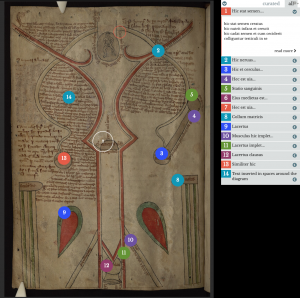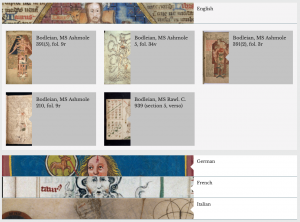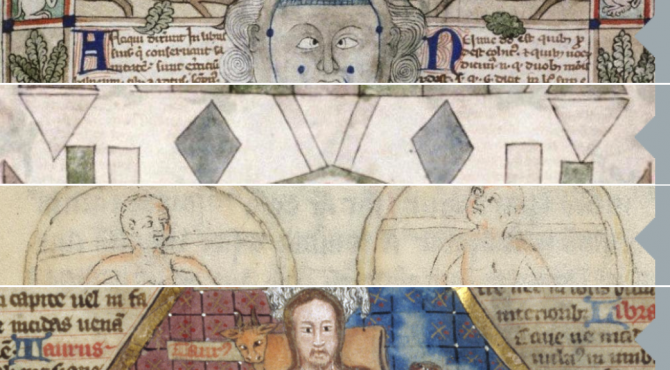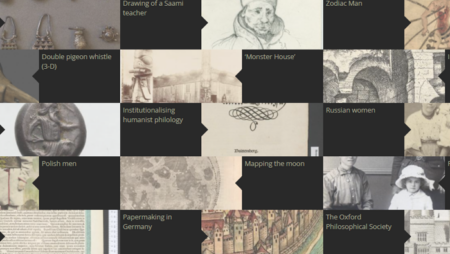Cabinet is well known across Oxford for the three-dimensional models of museum objects that we create to promote teaching with material culture. While these models are an effective way to get our users to engage with museum collections, Cabinet offers so much more. Demonstrating this, our new public course, Corpus: Representing the Body in Medieval Manuscripts, is built entirely around 2D images from manuscripts and designed for university-level teaching.
Cabinet is compliant with the IIIF (International Image Interoperability Framework): a set of image and metadata retrieval specifications that aim to make high-quality digital images more accessible. The framework is the result of an international and collaborative project, which the Bodleian has been involved with since the beginning. Corpus has utilised the IIIF to bring in high-quality 2D images of medieval manuscripts from various collections around the world that work with the framework, including the Wellcome Collection, British Library, Bayerische Staatsbibliothek (Munich), Cambridge University Library, Vatican Library, Zurich’s Zentralbibliothek and, of course, the Bodleian.
Beyond the ability to bring images together into one online paper, there are a number of features within Cabinet that make it the ideal tool for teaching with manuscripts.
- The Annotations Feature is particularly useful for the transcription and/or translation of languages inaccessible to many students. In this example, the Latin legends of this medieval diagram of the uterus (Bodleian, MS Ashmole 399, fol. 13v) are provided in numbered annotations.

This annotated image alone can be used to teach:
- History (of Medicine): Provided with an English translation, they demonstrate medieval concepts of anatomy and how they believed reproduction worked in the Middle Ages.
- Latin: Given to the students as a test, the teacher can ask them to translate the given Latin with the contextual help of the image. The students could even do so collaboratively by commenting on the annotations.
- Paleography: By comparing the handwriting in the image with the transcription in the annotation, students can learn how the letter forms compare and identify textual abbreviations – particularly those repeated within the image, showing which were conventional to the thirteenth century.
- Images are grouped together in a coherent course structure to build a deliberate learning pathway, through which the manuscript images can be compared with one another and/or treated separately. In the case of the zodiac man, an image often illustrated in medieval manuscripts and pictured below, the examples are grouped into categories according to their country of origin. While this encourages the viewer to compare the different images of the zodiac man, it also invites them to contextualise the images by demonstrating how their individual features relate to the place in which they were made.

- Each image is linked to the fully-digitised manuscript it comes from, meaning that whilst it is brought into Cabinet for a specific teaching purpose, it can be easily re-contextualised within the manuscript by simply clicking on the first entry in ‘external links’. This section also indicates further resources, from blog posts, to instructive videos, to digitised catalogue entries, encouraging the user to find out more.
If you would like to use Cabinet, to teach with medieval manuscripts or material culture relating to any other subject, please contact the Digital Education learning technologists at IT Services.
If you have any comments or queries about Corpus itself, please contact the course creator, Sarah Griffin. I am most grateful to Taylor McCall and Sian Witherden for their invaluable advice on the course’s content.






